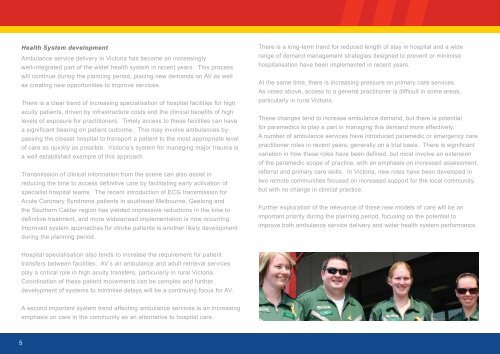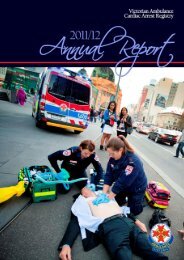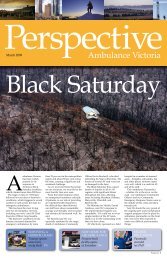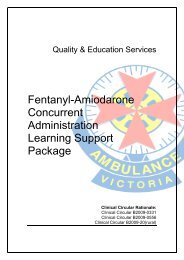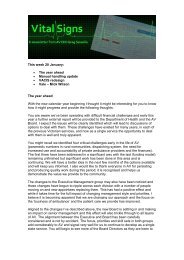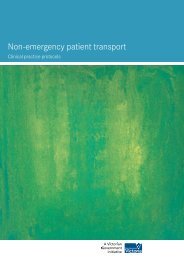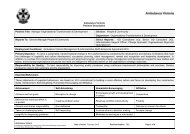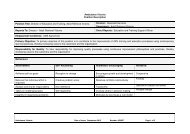AMBULANCE VICTORIA STRATEGIC PLAN 2010 â 2012
AMBULANCE VICTORIA STRATEGIC PLAN 2010 â 2012
AMBULANCE VICTORIA STRATEGIC PLAN 2010 â 2012
Create successful ePaper yourself
Turn your PDF publications into a flip-book with our unique Google optimized e-Paper software.
Health System development<br />
Ambulance service delivery in Victoria has become an increasingly<br />
well-integrated part of the wider health system in recent years. This process<br />
will continue during the planning period, placing new demands on AV as well<br />
as creating new opportunities to improve services.<br />
There is a clear trend of increasing specialisation of hospital facilities for high<br />
acuity patients, driven by infrastructure costs and the clinical benefits of high<br />
levels of exposure for practitioners. Timely access to these facilities can have<br />
a significant bearing on patient outcome. This may involve ambulances bypassing<br />
the closest hospital to transport a patient to the most appropriate level<br />
of care as quickly as possible. Victoria’s system for managing major trauma is<br />
a well established example of this approach.<br />
Transmission of clinical information from the scene can also assist in<br />
reducing the time to access definitive care by facilitating early activation of<br />
specialist hospital teams. The recent introduction of ECG transmission for<br />
Acute Coronary Syndrome patients in southeast Melbourne, Geelong and<br />
the Southern Calder region has yielded impressive reductions in the time to<br />
definitive treatment, and more widespread implementation is now occurring.<br />
Improved system approaches for stroke patients is another likely development<br />
during the planning period.<br />
There is a long-term trend for reduced length of stay in hospital and a wide<br />
range of demand management strategies designed to prevent or minimise<br />
hospitalisation have been implemented in recent years.<br />
At the same time, there is increasing pressure on primary care services.<br />
As noted above, access to a general practitioner is difficult in some areas,<br />
particularly in rural Victoria.<br />
These changes tend to increase ambulance demand, but there is potential<br />
for paramedics to play a part in managing this demand more effectively.<br />
A number of ambulance services have introduced paramedic or emergency care<br />
practitioner roles in recent years, generally on a trial basis. There is significant<br />
variation in how these roles have been defined, but most involve an extension<br />
of the paramedic scope of practice, with an emphasis on increased assessment,<br />
referral and primary care skills. In Victoria, new roles have been developed in<br />
two remote communities focused on increased support for the local community,<br />
but with no change in clinical practice.<br />
Further exploration of the relevance of these new models of care will be an<br />
important priority during the planning period, focusing on the potential to<br />
improve both ambulance service delivery and wider health system performance.<br />
Hospital specialisation also tends to increase the requirement for patient<br />
transfers between facilities. AV’s air ambulance and adult retrieval services<br />
play a critical role in high acuity transfers, particularly in rural Victoria.<br />
Coordination of these patient movements can be complex and further<br />
development of systems to minimise delays will be a continuing focus for AV.<br />
A second important system trend affecting ambulance services is an increasing<br />
emphasis on care in the community as an alternative to hospital care.<br />
5


